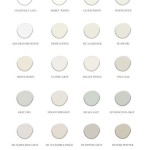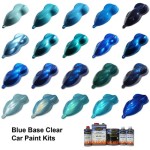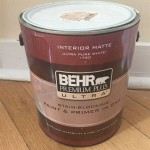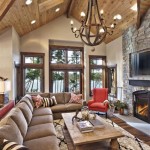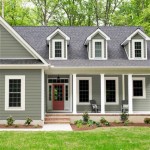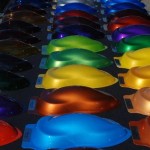Best Color to Paint a Privacy Fence: Factors and Considerations
Choosing the optimal color to paint a privacy fence involves a multifaceted decision-making process. The best color transcends mere aesthetic preference and must consider factors such as the surrounding environment, architectural style, sunlight exposure, and desired longevity. This article aims to provide a comprehensive analysis of these factors to assist in selecting a color that aligns with both practical and aesthetic objectives.
Understanding the Impact of Color on Perception and Environment
Color psychology plays a significant role in how individuals perceive their surroundings. Dark colors, while potentially offering a sense of sophistication and modernity, can absorb more heat, contributing to higher temperatures in the immediate vicinity of the fence. Lighter colors, conversely, reflect more sunlight, mitigating heat absorption and potentially creating a cooler environment. The choice between these opposing effects depends on the climate and the desired ambiance of the outdoor space.
Furthermore, color influences the perceived size of the area. Dark colors can make a space feel smaller and more enclosed, while lighter colors can create an illusion of spaciousness. This is particularly relevant for smaller yards where maximizing the perception of space is desirable. The color should therefore complement, not detract from, the existing dimensions of the property.
The surrounding environment, including landscaping and neighboring properties, also influences color selection. A fence color that clashes with the natural surroundings or the architectural style of adjacent buildings can detract from the overall aesthetic appeal of the property. Harmonizing the fence color with the existing environment is crucial for a cohesive and visually pleasing outcome.
Factors Influencing Color Durability and Maintenance
The durability of a fence color is directly correlated with its ability to withstand exposure to ultraviolet (UV) radiation, moisture, and temperature fluctuations. Darker colors, particularly those with a high pigment concentration, tend to fade more quickly under prolonged exposure to sunlight. This necessitates more frequent repainting to maintain the desired aesthetic appearance.
Lighter colors, while generally more resistant to fading, can be more susceptible to staining and discoloration from mold, mildew, and dirt. A light-colored fence may require more frequent cleaning to maintain its pristine appearance. The choice between dark and light colors therefore involves a trade-off between fading resistance and ease of maintenance.
The quality of the paint itself also plays a crucial role in color durability. High-quality paints, formulated with UV inhibitors and mold-resistant additives, offer superior protection against the elements and prolong the lifespan of the color. Investing in premium paint is a cost-effective strategy in the long run, as it reduces the frequency of repainting and maintenance.
The type of wood used for the fence also influences color choice. Certain types of wood, such as cedar and redwood, contain natural oils that can affect paint adhesion and color retention. It is essential to select a paint specifically formulated for the type of wood used for the fence to ensure optimal performance and longevity.
Popular Color Options and Their Respective Advantages
Several color options are commonly considered for privacy fences, each offering distinct advantages and disadvantages. White, a classic and versatile choice, creates a clean and bright aesthetic. It reflects sunlight effectively, keeping the surrounding area cooler, and complements a wide range of architectural styles. However, white fences require frequent cleaning to prevent staining and discoloration.
Neutral colors, such as beige, gray, and light brown, are another popular option. These colors blend seamlessly with the natural environment and offer a more subtle and understated aesthetic. They are also generally more resistant to fading than darker colors and can be easier to maintain than white.
Darker colors, such as black, charcoal gray, and dark brown, can create a sophisticated and modern look. They can provide a strong visual contrast and enhance the architectural features of the property. However, darker colors absorb more heat and are more prone to fading, requiring more frequent repainting and maintenance.
Staining is an alternative to painting that allows the natural grain of the wood to show through. Stains are available in a variety of colors, from light to dark, and can provide a more natural and rustic aesthetic. Stains typically require less maintenance than paint, as they do not peel or flake. However, they may need to be reapplied more frequently to maintain the desired color intensity.
Specific Color Recommendations Based on Regional Climate
The optimal fence color is further dictated by the specific regional climate. In regions characterized by hot, sunny weather, lighter colors are generally preferred to minimize heat absorption and reduce the risk of fading. White, light beige, and light gray are excellent choices for these climates. Furthermore, paints with high levels of UV protection are essential to prolong the lifespan of the color.
In regions with cooler, wetter climates, darker colors may be more suitable. They can help to absorb heat and create a warmer environment. Dark brown, charcoal gray, and even black can be effective choices for these climates. However, it is essential to select paints with mold and mildew resistant additives to prevent discoloration and degradation of the finish.
Coastal regions, characterized by high humidity and salt air, require specialized paint formulations. Paints designed for marine environments offer superior protection against corrosion and fading. Lighter colors are generally preferred in these regions to reflect sunlight and minimize heat absorption. White, light blue, and light green are popular choices for coastal fences.
Considerations for HOA and Neighborhood Aesthetics
Before selecting a fence color, it is crucial to consider any restrictions or guidelines imposed by homeowners associations (HOAs) or neighborhood covenants. Many HOAs have strict regulations regarding fence colors and styles, and failure to comply can result in fines or the requirement to repaint the fence. It is essential to review the HOA guidelines before making any decisions.
Even in the absence of formal HOA regulations, it is prudent to consider the overall aesthetic of the neighborhood. A fence color that clashes with the surrounding properties can detract from the community's visual appeal. Opting for a color that complements the existing architectural styles and landscaping can contribute to a more harmonious and visually pleasing environment.
Communication with neighbors can also be beneficial. Discussing color preferences and considering their input can foster goodwill and prevent potential conflicts. A collaborative approach to fence color selection promotes positive relationships within the neighborhood and contributes to a more cohesive community aesthetic.
The Role of Paint Sheen in Color Perception and Maintenance
Paint sheen, the degree of glossiness or reflectivity of a paint finish, also influences color perception and maintenance requirements. Different sheens offer varying levels of durability and resistance to staining and wear.
Flat or Matte sheens, characterized by their low reflectivity, offer a subtle and understated aesthetic. They are effective at concealing imperfections in the fence surface and creating a soft, natural look. However, flat sheens are more porous and susceptible to staining and are generally less durable than higher sheen finishes.
Satin and Eggshell sheens, with their moderate reflectivity, offer a balance between aesthetic appeal and durability. They are easier to clean than flat sheens and provide better resistance to staining and wear. These sheens are a popular choice for fences, as they offer a good compromise between appearance and performance.
Semi-Gloss and Gloss sheens, characterized by their high reflectivity, are the most durable and easiest to clean. They are highly resistant to staining and wear and can withstand frequent cleaning. However, gloss sheens can highlight imperfections in the fence surface and may appear too shiny for some aesthetic preferences.
The optimal sheen for a privacy fence depends on the desired aesthetic, the level of maintenance desired, and the condition of the fence surface. For fences with significant imperfections, a flat or matte sheen may be preferable to conceal flaws. For fences in high-traffic areas or those prone to staining, a satin or semi-gloss sheen is recommended.

Fence Paint Color Ideas To Boost Curb Appeal Wow 1 Day Painting

Fence Painting Ideas That Will Make The Difference

14 Best Backyard Fence Color Ideas For Stain Or Paint

Do S And Don Ts For Choosing The Right Fence Colour Maria Killam

Fence Paint Color Ideas To Boost Curb Appeal Wow 1 Day Painting

Best Fence Colours For Small Garden The Paint Guide

Popular House And Fence Color Combinations Find Your Match

Do S And Don Ts For Choosing The Right Fence Colour Maria Killam

Fence Painting Ideas That Will Make The Difference

22 Wood Fence Stain Colors How To Choose The Right One
Related Posts

